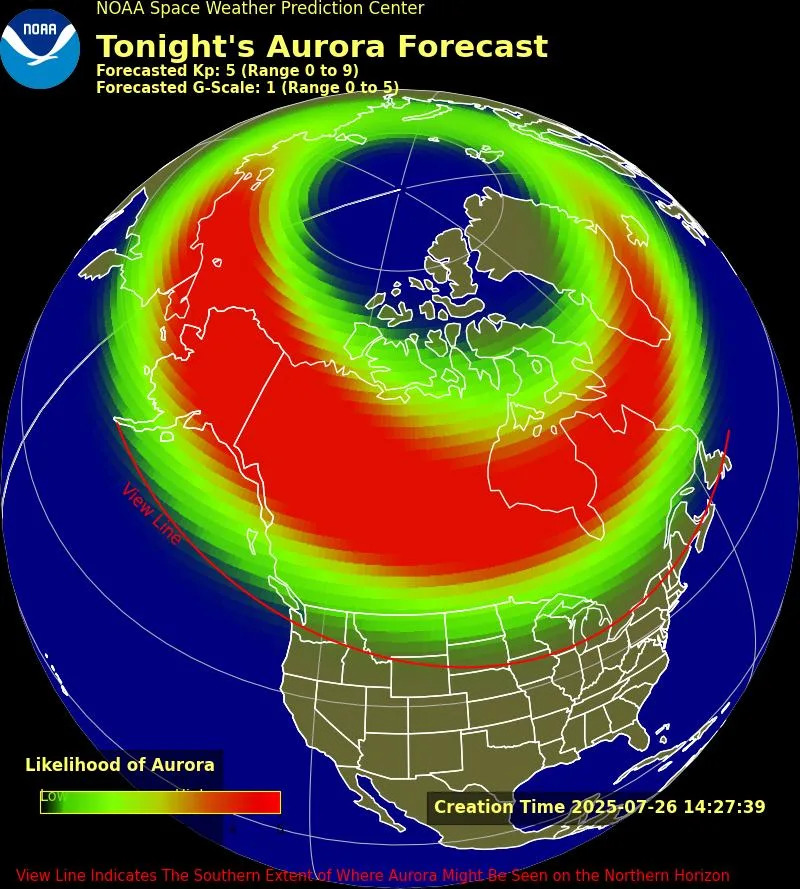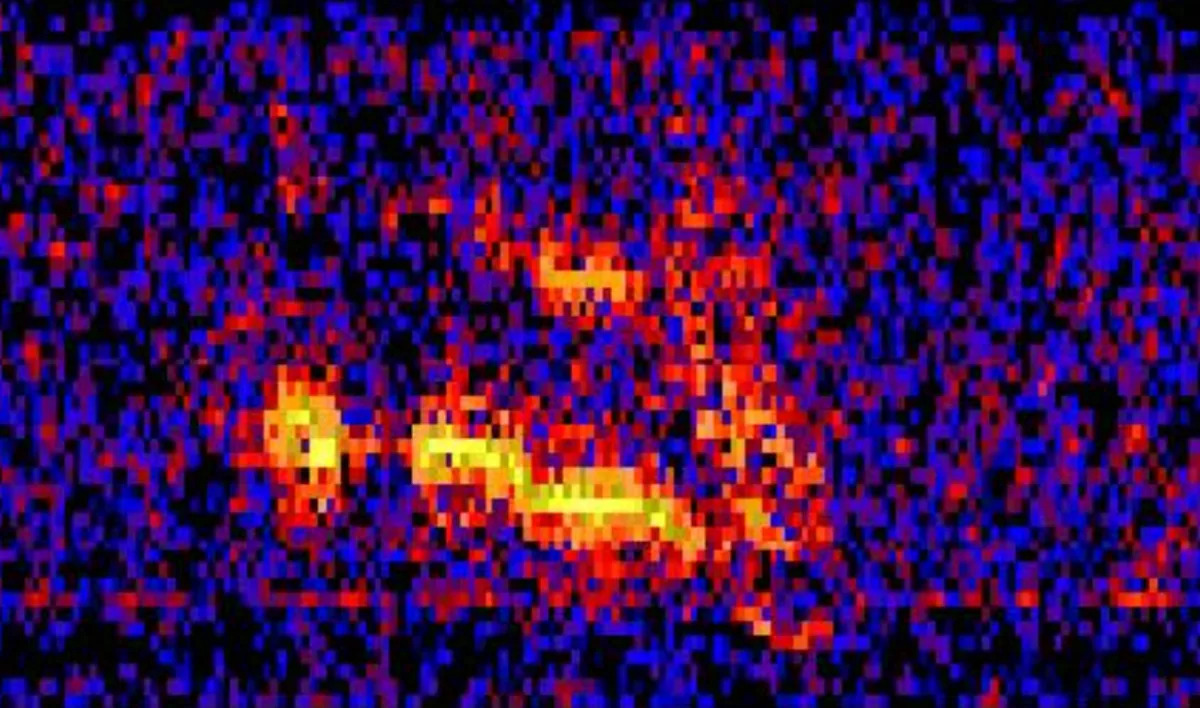Much of Michigan could see the northern lights on July 26, according to NOAA's Space Weather Prediction Center (SWPC) forecast.
The northern lights, also known as the aurora borealis, may be visible in as many as 14 northern states tonight, according to NOAA's SWPC dashboard.
According to NOAA, "view lines" Michiganders as far south as Grand Rapids, Lansing and Port Huron may be able to catch a glimpse of the shimmering lights in the night sky to the north. The lights could be overhead for people in parts of the Upper Peninsula.
NOAA says a G1 geomagnetic storm, a worldwide disturbance of the Earth's magnetic field, is expected to produce a Kp rating of 5.
Kp is an index used to indicate the severity of the global magnetic disturbances in near-Earth space, NOAA said. Kp ratings increase from zero to 9+.
NOAA is predicting moderate and minor geomagnetic storm impacts. Some high latitude electrical systems could suffer damage, radios could be affected among other issues.
When could the northern lights be visible?
The northern lights could be visible in Michigan Saturday, July 26, according to SPWC.
What are the northern lights?
The northern lights, or aurora borealis, are waves of light created when the solar wind strikes the atmosphere, creating a display of moving lights in the night sky.
Which states could see the northern lights?
The NOAA says the red "view line" marks the southernmost extent where aurora might be seen on the northern horizon.

While more than a dozen states have a chance to see the northern lights on July 26, Alaska has the greatest chance to see the spectacle, followed by parts of the following states:
Idaho
Michigan
Washington
Montana
Wyoming
North Dakota
South Dakota
Minnesota
Wisconsin
New York
Vermont
New Hampshire
Maine
Why do the northern lights have different colors?
The color of the aurora depends on which gas is being excited by the electrons and on how much energy is being exchanged, NASA said.
Oxygen emits either a greenish-yellow light (the most familiar color of the aurora) or a red light; nitrogen generally gives off a blue light. The oxygen and nitrogen molecules also emit ultraviolet light, which can only be detected by special cameras on satellites.
This article originally appeared on Lansing State Journal: Northern lights forecast: Michigan, other states could see aurora borealis July 26






Comments